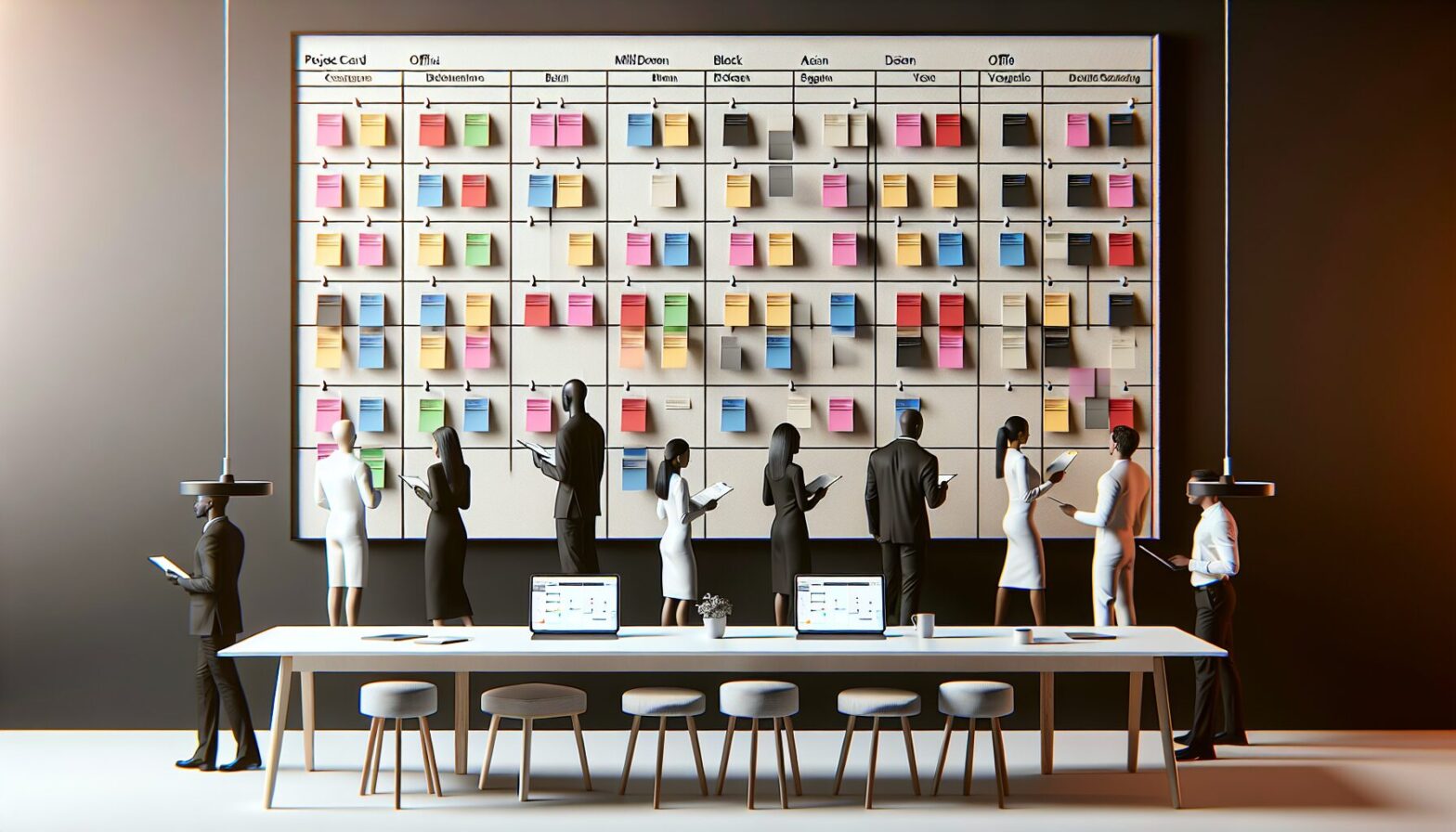Understanding T-Card Project Management
T-card project management is a time-tested organisational tool used primarily in industries where visual scheduling and quick task status updates are essential. The system employs small, colour-coded cards — shaped like a ‘T’ — that represent tasks, personnel, or resources. These cards are placed on racks or boards divided into columns representing different stages of a project, dates, or locations. Originally developed for manufacturing and maintenance teams, T-card systems have proven effective for managing workflows with clear visual cues.
What makes T-card project management so enduring is its simplicity and tactile nature. Unlike digital tools, the physical presence of cards can make project progress more tangible and accessible at a glance. For example, in emergency services or construction sites, where quick status checks can be critical, T-cards provide an immediate snapshot without needing to log into complex software.
Although it might sound old-fashioned in today’s digital world, T-card project management remains relevant because it fulfils a particular need: rapid, on-the-spot updates and easy adaptability. Its visual approach fosters team communication and accountability, making it a favourite in environments where hands-on control and visibility are paramount.
How T-Card Project Management Is Changing Over Time
The rise of digital project management platforms has inevitably influenced how T-card systems are used. Many organisations have integrated traditional T-card methods with digital tools, creating hybrid systems that offer the best of both worlds. For example, some companies scan physical T-cards into apps that track progress in real time or use electronic boards that mimic the classic T-card layout but with added functionality such as alerts and analytics.
Furthermore, advances in materials and printing technologies have enhanced the durability and customisation options of physical T-cards. Waterproof cards, magnetic backing for flexible placement, and QR codes linking to digital information are examples of innovations that keep this analogue tool relevant. This evolution shows that while digital transformation is sweeping through project management, there remains a place for tactile systems adapted for modern demands.
In industries like healthcare, logistics, and event planning, where human interaction and physical spaces play critical roles, these hybrid T-card systems bridge the gap between traditional workflow management and the need for data-driven insights. As remote working and virtual collaboration grow, there is also an emerging trend of virtual T-cards — interactive digital boards that preserve the intuitive layout but allow distributed teams to stay synchronised.
The Future of T-Card Project Management: Bridging Tradition with Innovation
Looking ahead, the future of T-card project management seems poised to blend further with emerging technologies such as augmented reality (AR) and Internet of Things (IoT). Imagine a construction site where workers wear AR glasses that overlay virtual T-cards onto physical spaces, showing real-time task updates linked to sensors monitoring equipment status or material delivery. This fusion could revolutionise on-site coordination by preserving the immediacy of T-card visuals while leveraging rich data streams.
Moreover, AI-powered analytics could enhance T-card systems by identifying bottlenecks and predicting project risks based on card movement patterns. Such insights would enable proactive decision-making without sacrificing the simple visual language that teams rely on.
Despite technological advancements, the core strength of T-card project management — clarity through visual organisation — will remain essential. The challenge lies in balancing innovation with usability, ensuring that any new features enhance rather than complicate workflows. Ultimately, T-cards will continue to adapt as a vital project management tool by embracing change while honouring their practical roots.
Conclusion: Why T-Card Project Management Still Matters
In an era dominated by digital solutions, the enduring appeal of T-card project management lies in its straightforwardness and adaptability. While it originated as a simple physical tool for tracking tasks and resources visually, it has evolved through integration with digital technologies and innovative materials to remain relevant across diverse industries.
Its strength is in providing immediate visual clarity that supports fast decision-making and team collaboration — qualities that can sometimes be lost in complex software environments. The ongoing developments towards hybrid and augmented reality-enhanced T-card systems highlight how tradition and innovation can coexist effectively.
As organisations face increasingly dynamic and distributed work environments, tools like the T-card system remind us that the best project management solutions often combine familiarity with forward-thinking enhancements. The future of T-card project management is bright because it continuously adapts while staying true to its core mission: making work visible, manageable and efficient.
Notes
- T-card systems date back to early 20th-century manufacturing practices.
- Hybrid T-card systems combining physical cards with digital tracking are increasing in popularity.
- Waterproof and magnetic T-cards improve durability and flexibility in challenging environments.
- Augmented reality applications for T-cards are currently being piloted in construction and logistics.
- Visual project management tools like T-cards can increase team productivity by up to 25%.
